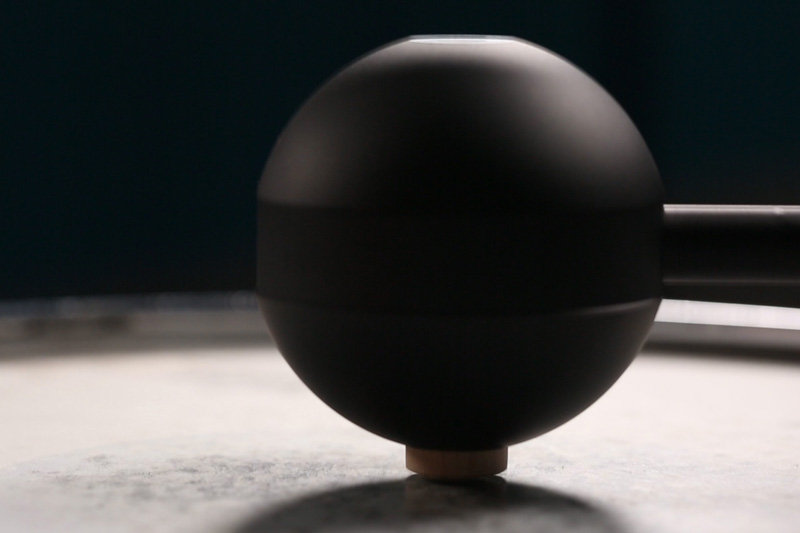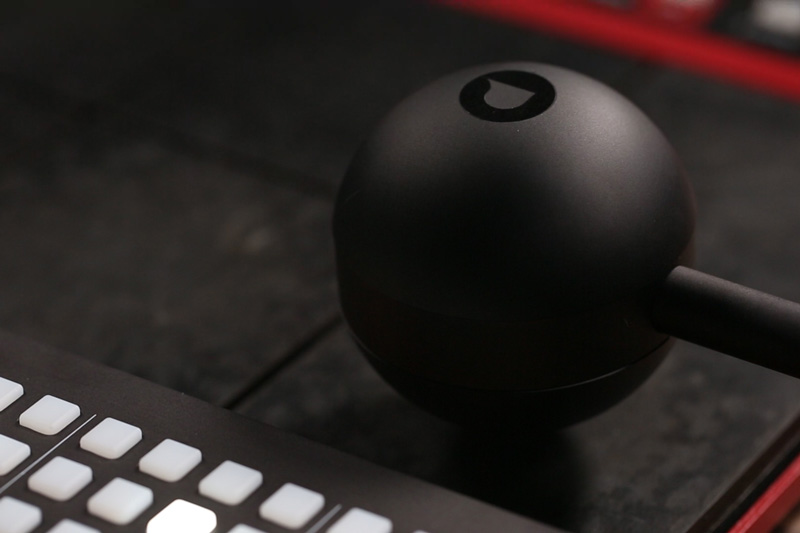In this video, we scratch the surface of the Polyend Perc's possibilities by striking the surfaces of some percussion instruments we had lying around our shop. Perc exists in a category of its own—a means of controlling acoustic instruments via MIDI or CV.
Here, we're using Polyend's Seq as a master control source—but Perc works equally well via MIDI or CV, providing all sorts of electronic musicians a means to turn everyday objects and percussion instruments into an extension of their own workflow.
Acoustic Instruments for Electronic Musicians
Perc is a little bit hard to describe—a robotic drummer? A MIDI/CV-controlled percussion striker? Regardless of the name applied to it, it's clear to us that the Perc is just outright cool, providing electronic musicians the option to take control of acoustic percussion sounds, or to turn virtually any object into a musical instrument.
Perc is comprised of a couple of parts: a beater and a controller box. The beater connects to the controller box via an integrated XLR-style cable, which feels quite rugged—it definitely seems like this cable will hold up for a long time. The unit includes the hardware necessary to secure the beater to typical percussion stands or drumhead rims, making it easy to attach to virtually any standard percussion instrument. Simply plug the beater into the controller and place the beater ~5mm from the surface you intend to strike and it is ready to go.
The controller provides the option to control the beater via MIDI or CV. The controller itself offers MIDI DIN input, USB-B for computer connection, and independent analog inputs for gate and velocity CV. It is simple to use a modular synthesizer, MIDI controller, or a DAW to control it, bringing to light a number of potential applications: it could be an augmentation to a Eurorack drum machine, or a way of accurately recording acoustic drum parts in the studio, or an addition to a drummer's own setup, providing them an extra hand, as it were.
 Detail of the Perc's wooden beater on a well-worn drum head.
Detail of the Perc's wooden beater on a well-worn drum head.
The possibilities of these applications compound considerably when we take into consideration two of Perc's most noteworthy features: its velocity responsiveness and its sheer speed. Perc can produce everything from light, gentle taps to forceful strikes, giving it an enormous dynamic range—turning velocity into a more immediately expressive and playable parameter than most soft synths or Eurorack modules might condition one to believe possible. Everything from subtle ride cymbal taps all the way to explosive snare hits are immediately accessible.
And of course, Perc is fast. Because of its sheer mechanical accuracy, Perc can execute rhythms not possible with human hands, with a level of detail and nuance that brings entirely new possibilities to sound design with acoustic sources. What if an inhumanly fast drumroll could have specifically defined velocity patterns and gestures embedded? What if you could treat rhythm as an extension of timbre, blurring the line between discrete notes and a growing, pulsing sonic mass? What makes Perc so exciting is not so much its ability to emulate a percussionist, but its ability to provide new ways of contextualizing familiar parameters, turning simple concepts like Gate and Velocity into new avenues for sonic exploration.

Attach Perc to an aluminum trash can, to a glass bottle, to an oil drum, to a PVC tube; use it to create compelling, nuanced rhythms. Explore textures otherwise impossible to create by hand, and find a level of sensitivity and dynamic range difficult to achieve through electronic means alone. Bringing the age-old magic of acoustic soundmaking to electronic musicians, Perc is one of the more innovative and well-designed devices we've seen in some time.
Looking for some inspiration for robotic music-making? Scope out these stellar albums below—music by Aphex Twin and Mark Fell, each utilizing mechanical instrument control to make simply unreal rhythms and textures.







